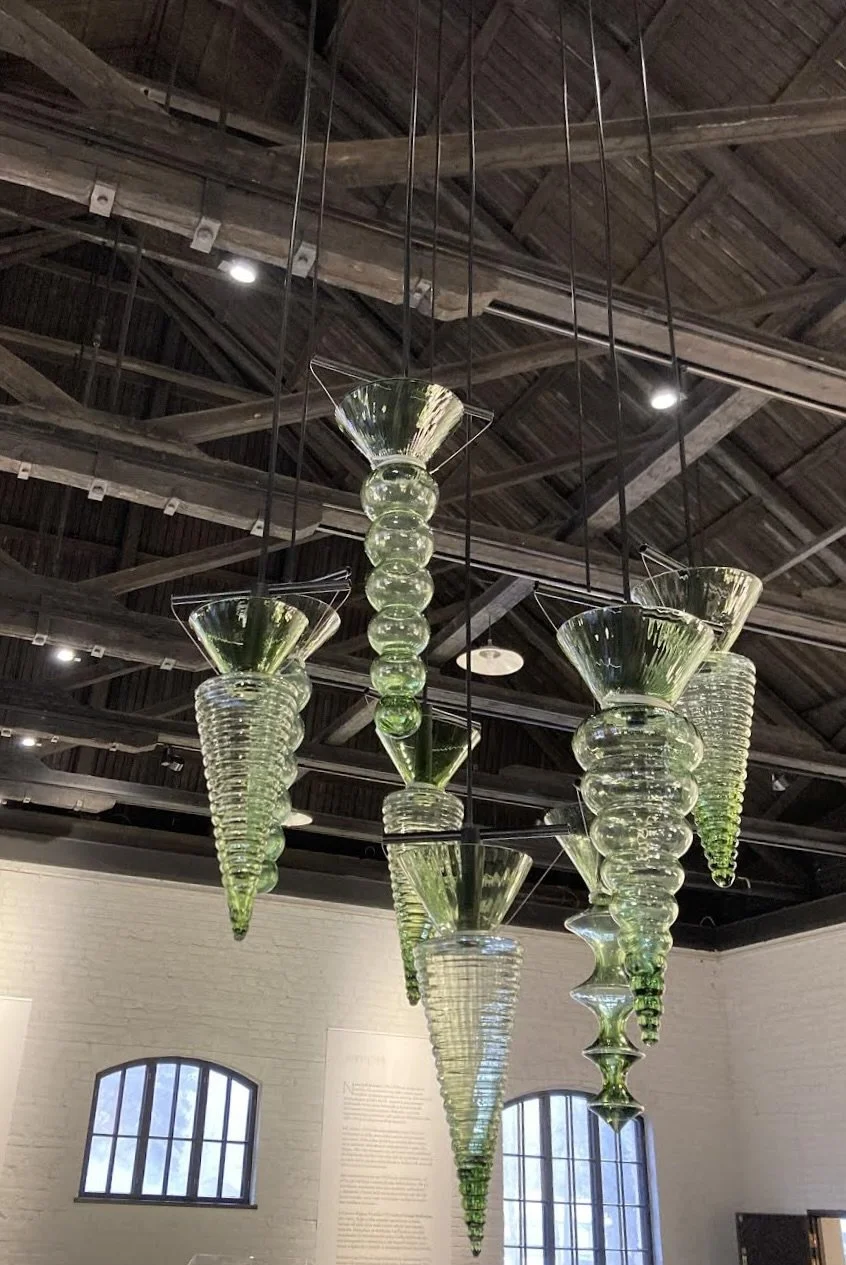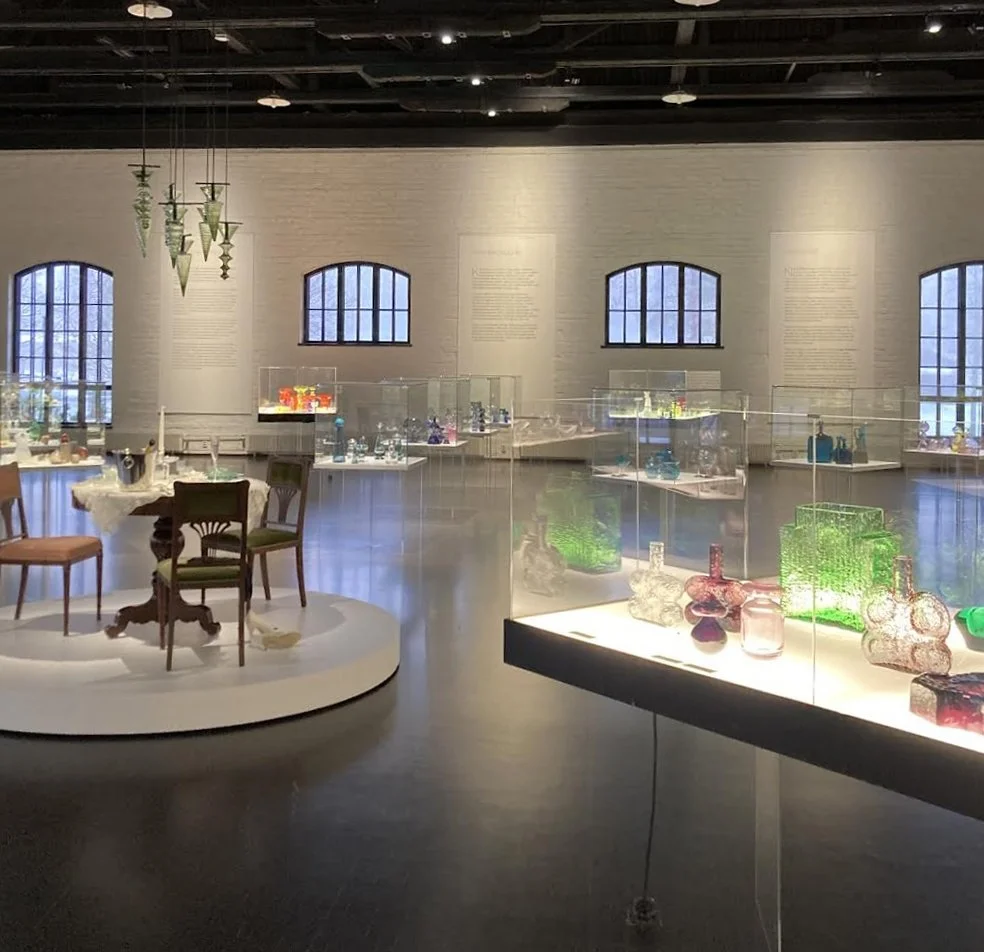STILL MOMENT IN GLASS
Nanny Still-McKinney (1926-2009) graduated as a designer from the metalworks department of the School of Industrial Design in 1949. Almost immediately she also won the competition for Nordic glass arts by Riihimäki Glass and was employed to the factory. Working with glassblowers was not particularly easy for Still, as she preferred to execute everything she designed with her own hands.
Although Still moved to Belgium already in 1958, after marrying American George McKinney, she continued her collaboration with Riihimäki Glass. Still divided her life by her artistry and her family: while in Finland, she spent her days in Riihimäki with the glassblowers and nights entertaining in Helsinki. Afterwards, she would return to her family in Belgium. Amongst the male-dominated glass design world, Still was sometimes called “the Glass Princess”, for she enjoyed the aesthetics and was very feminine in her dress, appearance and the wish to socialize.
She also had time to create herself a name around Europe. Nanny Still received one of Belgium’s most prestigious design award, Signe d’Or, as well as had an exhibition in Paris, made wall-lights to the Dutch Raak Lichtarchitectuur and ceramics to Cerabel porcelain factory.
Intrisic for Nanny Still’s works seem to be particularly the playfulness of her designs. Whether it is the shade, shape or name of the work, it has endearingly Still-like quality. There is Harlequine, Sultan, Tzarina, Sandman, Pylpyrä (Bogie wheel) and Mitre. The post-war lack of materials drew out the real imagination of the designers – the less material to play with, the more innovative one needed to be. Still was able to see such possibilities for joyful shapes in materials. One of her most legendary quotes is: “’No’ is only the beginning of the word ‘yes’.”
Interesting part of Still’s works are also their colours. The turquoise colour is the most well-known Still. Similarly, the shapes, which benefited from Modernism, were at their best in colourful household glass. It was exciting to design drama for the art glass pieces, but with household glass Still was able to experiment with new colour entities. She herself admired the “atmosphere of the Imperial plush and the golden glitter of the Byzantine romanticism”. Internationally, the best-known series by Still has often been thought being the Flindari. Today, however, the delightfully interior-friendly, colourful decorative bottles seem to be the most-wanted of her works.
The Finnish Glass Museum’s spring exhibition ‘Still Life – Nanny Still’s Glass, Design and Art’ will present a wonderful collection of Nanny Still’s household glass, design works and unique art pieces full of possibilities. These pieces definitely say YES!
Text and photographs: Art Historian Johanna Lindfors
Sources:
Finnish Glass Museum, exhibition catalogue Design 45 anni Nanny Still, 1996
Amos Anderson Museum, exhibition catalogue 2001.




